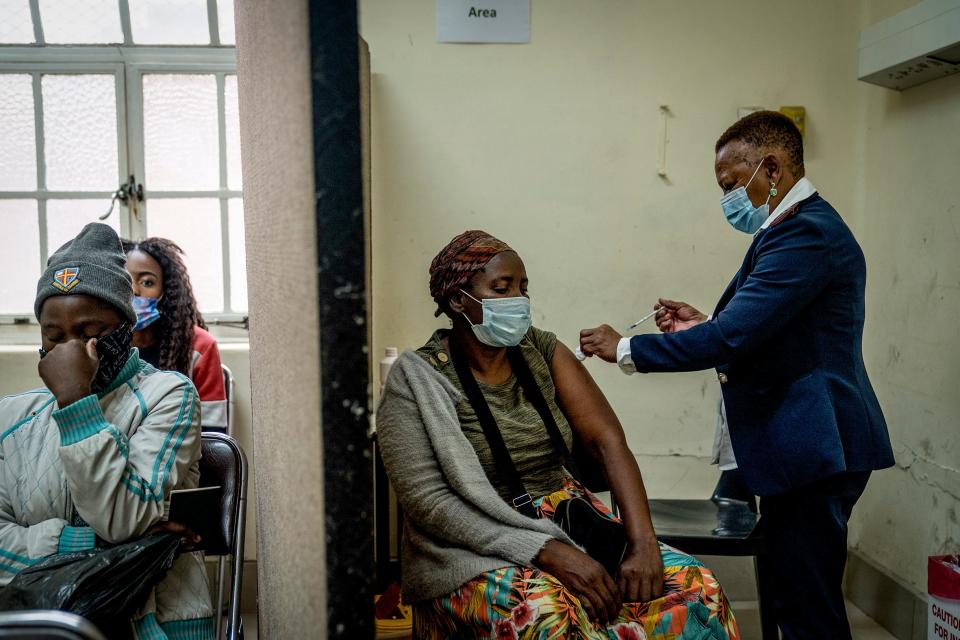We aren't moving fast enough. We must reassess the race to vaccinate the world for COVID.
Evidence that COVID-19 vaccine immunity can decline significantly after eight months suggests an urgent need to reassess what is meant by vaccinating the world.
Ambitious global targets, set by the World Health Organization and President Joe Biden, aim to fully vaccinate 70% of the population of every country by next fall.
If this is to have real impact, in terms of protecting lives and reducing transmission, then we need to ensure that 70% of people are not just vaccinated but also that those at highest risk are and remain protected.
Because it’s not just how many people you vaccinate that counts, but how quickly you get there.
That means, based on the current state of the global vaccine distribution, we aren’t moving fast enough. While more than 40% of the world is now fully vaccinated, in low-income countries just 5% of people have received their first shot.
Opinions in your inbox: Get a digest of our takes on current events every day
The way to change that narrative is to focus efforts within these countries where it counts the most, namely initially protecting those most at risk – the approximately 20% of people most likely to come into contact with the virus, such as health care workers, and those most vulnerable to severe disease.

In the bid to reach 70%, if we don’t protect these individuals first, then it will be difficult to break the cycle of transmission and infection levels will remain high.
COVAX, which is leading the global effort to distribute COVID-19 vaccines, in particular to the 92 lower-income countries that would otherwise struggle to get access, has drawn criticism for lacking ambition with its initial target of a 20% vaccination rate.
Dr. Scott Gottlieb: Amid COVID and delta variant, omicron has the potential to change the equation
In fact, given the demographics in many of these countries, that actually represents about 40% of the adult population. Moreover, if we don’t achieve this more targeted approach first, then even if we reach 70% by next autumn, the risk is that it will have far less impact on the spread of the disease.
The point is that we need to get those at highest risk vaccinated with the primary series and do it rapidly to avoid getting to a stage where we let vaccine immunity wane in people and allow those previously protected to become susceptible again.
It is now widely anticipated that some form of regular boosters for COVID-19 may become the norm, much like seasonal flu shots. But while many high-income countries are already offering boosters, in lower-income countries where so many people are still unprotected and doses are so precious, prioritized primary vaccination still needs to be the priority.
Columnist Connie Schultz: Let's help our brave children through this pandemic by getting them vaccinated, again
COVAX has not yet met its target to provide enough vaccine to protect people at high risk, but while challenges remain, it is feasible within the short term. Vaccine manufacturers are now collectively producing 1.5 billion doses a month, with 12 billion doses expected to have been produced by the end of the year, enough to vaccinate everyone on the planet.
Vaccine supplies are increasing
More important, COVAX now has a much better handle on when supplies are becoming available, meaning countries can now plan in confidence how to gear up their national campaigns. This is a far cry from a few weeks ago, when COVAX’s supplies were extremely hampered by vaccine hoarding and export restrictions.
No one is more frustrated at the challenges COVAX has been forced to contend with than I am, but the reality is that COVAX has supplied 73% of the vaccines that have reached low-income economies, and without this effort, the global inequities we see in vaccine distribution would not only be considerably worse but would most likely persist.
President Biden: My winter plan fights COVID with testing and vaccines and without lockdowns
With more than half a billion vaccine doses delivered to 144 countries, COVAX is now delivering at scale. It’s time for all stakeholders to work together to build on this momentum and prioritize high-risk individuals first.
With this continued support, we still hope to have around 1.3 billion doses available, shipping between 800 million and a billion, by the end of the year. If we can keep the doses coming and get them out quickly, and if lower-income countries, many of which have competing priorities, are willing and able to get them to high-risk populations, then this will bring us close to achieving that initial 20% vaccination rate by the end of the year, and the rate will increase substantially in early 2022.
Focus on high-risk populations first
Given the risks posed by a decline in vaccine immunity, including the potential to trigger further waves of COVID-19, primary vaccination of high-risk populations has to be the priority.
High-risk populations, such as older people, are much more likely to face hospitalization and over a thousand times more at risk of dying if infected. So while high vaccination coverage remains an important aspiration, to have the most impact and achieve sustainable long-term protection, we need to reach these high-risk populations first.
Dr. Seth Berkley is CEO of Gavi, the Vaccine Alliance.
You can read diverse opinions from our Board of Contributors and other writers on the Opinion front page, on Twitter @usatodayopinion and in our daily Opinion newsletter. To respond to a column, submit a comment to letters@usatoday.com.
This article originally appeared on USA TODAY: Focus COVID vaccinations on high-risk populations to stop pandemic

